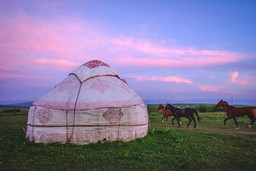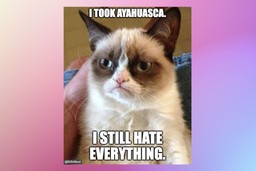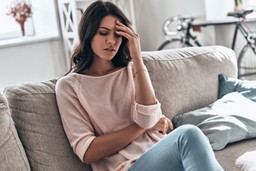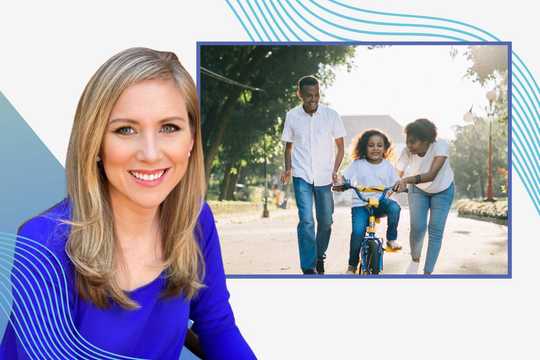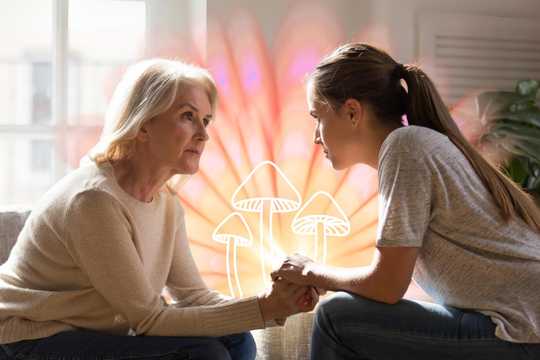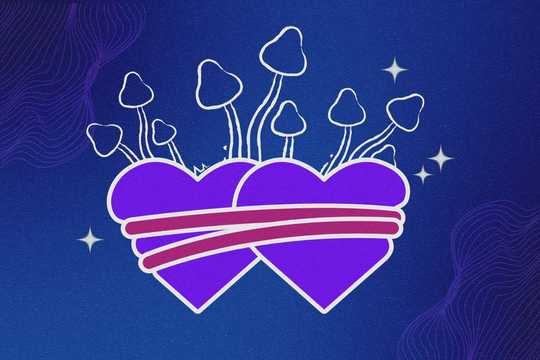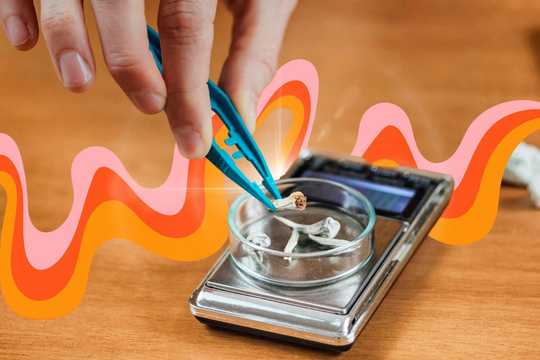Want to start a war on social media? Post something like this: “Bad trips exist.”
As somebody who has worked in the psychedelic space for years now and has supported many, many people during their trips, it’s time to come out of the closet and say it: people can be harmed by psychedelics, and bad trips exist.
But allow me to define the term “bad trip,” because the vague phrase has become too polarized to be meaningful.
When I talk about bad trips, I’m not talking about the harrowing, painful journeys to the underworld from which we return raw and exhausted, with some important piece of our healing work having been catalyzed.
When I talk about bad trips, I mean the trips that register in the body as a trauma or injury to the nervous system. And that is not, in fact, the same thing as a difficult trip.
What happens when we deny this truth is that we inadvertently alienate those who have had traumatic or harmful experiences. These people have endured a trauma, and are now being told that they have not.
So let’s talk about traumatic trips: The psychedelic experiences that leave us injured. Thankfully, they are rare.
I’m not just speaking from my observations as a clinician, but also from personal experience: I had a traumatic psychedelic experience on ayahuasca many years ago. I was decidedly “not okay” afterwards and required much time and support to recover.
Despite the shock and injury to my nervous system, I eventually used psychedelics again. In fact, in the eight or so years that have passed since the traumatic trip, I have openly supported the legalization of psychedelics, and have built two businesses centered around empowering people to heal with psychedelics.
I have also taken sabbaticals from my practice to work in other countries as a psychedelic facilitator. I am now a lead educator in the country’s first training program for psilocybin facilitators to be licensed by Oregon’s Higher Education Coordinating Commission (HECC). I’m a ketamine prescriber, and I train other prescribers in the use of ketamine for treating chronic pain and mood disorders. I lead and run intensive healing retreats. I’ve also taken my own fair share of mind altering substances in a variety of sets, settings, and time zones.
All of which is to say: I am no newcomer to the world of psychedelics.
And yet I cannot swallow the field’s echo-chamber-like mantra that “there is no such thing as a bad trip.” In fact, I find the rabidity with which some of my fellow cosmonauts deny the existence of bad trips to be rather disconcerting. In the more-than-one heated debate I’ve had about this topic, I’ve noticed certain patterns – or myths, if you will – around the topic of traumatic trips. I address each one here.
Myth: Bad Trips Only Happen When the Set and Setting Are Improper
If the word “only” didn’t appear in the above sentence, it would be true. In my experience in working with hundreds of patients who have used psychedelics – and in administering psychedelics myself – I’ll say that the vast majority of traumatic trips happen when the environment is not safe, calm, and supportive.
When we talk about set and setting in psychedelic harm reduction, we mean two things: (1) the person’s mindset when they took the drug, and (2) their physical environment. If somebody had just had an argument with their spouse before taking LSD, for example, that’s their set. If they were at a noisy, crowded music festival, that’s the setting. Perhaps unsurprisingly, the majority of bad trips happen when individuals on drugs feel overwhelmed in a noisy, chaotic setting like that of a concert or party. Drug-drug interactions are also often at play during difficult trips, for example, when people combine alcohol with psychedelics.
When people insist a little too strongly that, “There’s no such thing as a bad trip, if the set and setting are right,” I feel uneasy. It’s perhaps like asking a rape survivor, “Yeah, but what were you wearing?” (If you think the analogy of a bad trip and rape is too far of a reach, you luckily have never had a traumatic trip.)
There are other factors in psychedelic harm reduction that influence the outcomes. These include the substance being used, the dosage taken, and the people you’re with.
The night of my traumatic trip was the third of a three-night ayahuasca ceremony. I was there with my then-partner. I liked the other people attending. I trusted the facilitators completely and knew they were well trained and highly esteemed by their colleagues. The medicine was pure. The environment was soothing and well contained. The music was beautiful. The first half of the third ceremony was trippy, strange, and lovely.
After I drank my second dose of the brew, however, I was decidedly NOT OKAY. I will not describe the experience here, but I will say two things about it: (1) I felt like my nervous system was being gang raped, repeatedly, and (2) I can now absolutely understand why people with psychosis sometimes choose to die by suicide.
The facilitators of the circle took care of me, pulling me out of the ceremony space and letting me try to calm down outside. Somebody stayed with me at all times until I vomited up the salt water they gave me to drink.
There’s one factor of harm reduction we don’t discuss enough: dose. It’s possible that the second cup of ayahuasca I drank that night contained more voltage than my nervous system could handle – that it was too much, too fast, and too hard for me.
The Influence of Neuroticism
Aside from the environment, another factor that can predict bad trip potential is neuroticism. Neuroticism is one of the “Big Five” traits thought to collectively form the full picture of personality.
People who score high on neuroticism tend to overthink things, typically have a hard time relaxing, and may feel irritated in noisy settings or stressful situations. These folks are often described as “high strung.”
At least two studies have shown that people who score high on neuroticism scales are more likely to have a challenging psychedelic trip than those who score lower.[1],[2] The theory behind this is that if a neurotic’s negative thoughts or feelings arise during a psychedelic trip, the person might get pulled into an amplification spiral of their own negativity.
But does that mean it’s somebody’s fault that if they tend towards neurosis and they have a bad trip? Aren’t psychedelics supposed to help heal negativity? What does it mean that the same drugs that help soothe negative thoughts and feelings can also make us feel worse? (Let a neurotic chew on that one.)
Once again, we could very easily slip into the territory of victim blaming if we are not mindful.
While writing this article, I took the Big Five Personality Test online. I scored in a higher-than-average percentile for negative emotionality (neuroticism). That may explain why grumpy cat is one of my heroes and why my friend Greg refers to me as “a female Larry David.” It could also explain why I’m one of the unlucky few who have had a traumatic psychedelic trip. (Side note: I also scored pretty high on open mindedness, so that could explain why got into psychedelics in the first place.)
Myth: Bad Trips Are Actually Just Difficult Experiences That Haven’t Been Integrated
I continue to stay in this field because traumatic trips are, indeed, exceedingly rare, and because the healing gains people typically experience from psychedelics are unparalleled by any other intervention I’ve found.
Working regularly with patients in non-ordinary states of consciousness, I see that the most challenging experiences are often the most rewarding. Drawing from my previous experiences in volunteering with the Zendo Project and White Bird, I teach my students the tenants of “trip sitting.”
As one of the Zendo principles states: difficult is not necessarily bad. Note that the phrase is not “difficult is not bad,” but rather, “difficult is not necessarily bad.” In other words, difficult can sometimes be bad.
Another layer to this argument is that if you wait long enough, the bad experience will prove itself to be good. This does, indeed, happen to many people after their challenging journeys. Yet there is a difference between suggesting this to a bad trip survivor and insisting that “everyone gets the trip they need.”
Many of my new-age peers have become allergic to the word “bad,” especially within the context of bad trips. “Is anything really bad?” I’m often asked. The argument here, as I understand it, is that with every cloud there comes a silver lining, and that silver lining might just hold a very valuable teaching for us.
I admit that my own traumatic trip gave me a lesson: It taught me that there is indeed such a thing as a bad trip. Another gift was that my bad trip helped me to better understand, validate, and support others who have been harmed by psychedelics. Another lesson was this: my bad trip was an amplifier of the toxic positivity that I see running rampant in the psychedelic field.
In fact, a patient once confessed to me, “I’m just so mad at her” – her being ayahuasca – “but everyone in the group is so in love with Great Grandmother that if I say one bad thing about her, it’ll be like heresy.” I noticed that he was clenching his jaw and only breathing into the upper part of his chest. I leaned forward, looked him in the eye, and said: “Tell me exactly what you think about that bitch – you won’t offend me.”
By the end of the hour, he had raged, wept, and laughed. His breath was reaching his abdomen and his jaw was relaxed. The client messaged me some days later, saying, “That was so healing for me just to be heard, to be able to say mean things without being afraid somebody would cancel me. Thank you.”
Perhaps for this client, “the medicine” was to be heard without anybody trying to stop him from expressing anger. Maybe the bad trip was just part of the arc that took him to that finale. I don’t know.
Myth: There’s No Such Thing as Bad
There’s that old story about the Zen master, whose son got a new horse. “What good luck!” The neighbors said. “We’ll see,” said the master. One day the son was thrown from the horse and broke his leg. “How terrible!” Said the neighbors. “We’ll see,” said the master. Then the country went to war, and the army came to recruit soldiers. Because the young man’s leg was broken, they army didn’t take him to battle. “How good!” said the neighbors. “We’ll see,” said the Zen master. Perhaps there is no good or bad.
What I’ve always found lacking in this story about the Zen master was the voice of his son – the one who actually fell from the horse.
Is a bad trip like falling from a horse? It absolutely can be. Yet something about the “you just haven’t integrated it yet, there’s gold there” argument feels like a dismissive bypass. Let us consider other situations in which we could apply such a statement:
- After getting food poisoning and vomiting for hours
- After taking penicillin and breaking out in a full body rash
- After going on a horrible date
- After surviving a sexual assault
- After your child has been diagnosed with a life-threatening illness
- After losing a loved one to cancer
- After surviving a terrible accident that has resulted in disability
- After your cat has been run over by a car
- After losing a house to foreclosure
Would we really tell the people in the above hypothetical situations that there was no such thing as bad shellfish? No such thing as a bad drug reaction or a bad date? No such thing as rape? No such thing as a bad diagnosis, a bad prognosis? Or how about just a bad day? Or something as non-threatening as a bad movie, a bad haircut, or a bad parking job? Would we really tell somebody whose child just died to avoid using the word “bad” to describe her condition?
Perhaps it is true that none of these things are bad, and that all of them are blessings in disguise. But would we really get righteous about it on social media, the way some of us do about denying bad trips?
And what’s so bad about saying “bad,” anyway? Must everything truly be a blessing? (The neurotic writing this article needs to know.)
I’d also like to share the story of Becks. Becks was a 24-year-old female patient of mine with anorexia nervosa who did MDMA-assisted psychotherapy to heal from PTSD (post-traumatic stress disorder) rooted in childhood sexual abuse.
In a follow-up visit, Becks told me that the MDMA-assisted therapy session (done with an underground provider) had done wonders for her. She was getting much more mileage out of her weekly therapy sessions. She was now remembering things she had repressed previously, and she was able to stay present when the memories arose.
Becks had also forgiven herself. She explained that without realizing it, she had blamed herself for what happened to her when she was a child, punishing herself through self-denigrating thoughts, food restriction, and high-risk drinking. Her MDMA-assisted therapy session helped her identify this pattern and realize that she didn’t deserve the blame or the punishment. Having forgiven herself, Becks was now sleeping better at night, eating when she was hungry, and avoiding alcohol. Clearly, much healing had occurred for her.
Yet Becks felt discouraged and worried. “I don’t think I’m doing it right,” she told me while pulling at the rings on her fingers.
“Why’s that?” I asked.
“Well,” she explained, “I know I’m supposed to get to this place where I feel like the trauma was a blessing – and that hasn’t happened.”
“You think you’re supposed to get to a place where you think that being repeatedly molested as a child is a blessing?” I asked her.
“Yes,” she said with a defeated sigh as she looked at her shoes.
“Where’d you get that idea?”
Her head snapped up to look at me, breathless, huge-eyed. And then she burst out laughing. The laughter turned to tears. She sobbed and babbled something about a podcast she’d heard. Then she laughed some more. Her face lit up and the color returned to her cheeks.
“Becks, was being molested by your stepbrother every night a blessing?” I asked her.
“No, it was a fucking horrible nightmare that I wouldn’t wish on my worst enemy,” she declared.
“Okay,” I said, “and is it possible that it was a fucking horrible nightmare and that you still get to heal and have a happy adult life starting right now?” I asked.
“Fuck yeah,” she said. And the look on her face told me she believed it.
(This, by the way, is what happens when you go to a doctor who scores high on neuroticism scales: We acknowledge and celebrate that life might be a fucked up mess sometimes, and that we can still heal even if we don’t buy into toxic positivity.)
(Also: I do have patients who come to see their traumas as gifts. It truly is a powerful and important step in their healing. But let’s not assume that healing cannot happen in other forms. Everyone’s path is different and valid.)
Myth: Talking About Bad Trips Is Going to Harm the Psychedelic Movement
On the day I graduated from medical school, I took an oath to First, Do No Harm. Sometimes, First, Do No Harm means doing the uncomfortable thing or saying what others don’t want to hear. In this case, it means acknowledging that there are risks to using psychedelic substances, and a traumatic trip is one of those risks.
Every therapy, every medicine, every experience comes with risks and benefits. One risk of taking vitamin C is that too much can cause diarrhea. One risk of antibiotics is that they can lead to vaginal yeast infections. One risk of using acetaminophen (paracetamol) is that it’s hard on the liver. One risk of eating a vegan diet is that it can deplete vitamin B12 stores and subsequently trigger depression. One risk of a life-saving surgery is that it can result in a lethal infection. And so forth.
Psychedelic medicines also come with their risks, and the risk of a traumatic trip should be on that list. Admittedly, it should be in small letters, towards the bottom of the list, next to the words “very rare when used in therapeutic contexts.” But traumatic trips are, in fact, “a thing.” They’re part of the fine print.
As far as I know, bad trips have not been reported in any of the clinical trials on psychedelics – but keep in mind that we haven’t had too many people go through the clinical trials as compared to the number of folks doing psychedelics “in the wild.” Bad trips may have also been down-played in the trials as “dysphoria” or “agitation” by the researchers.
Are the possible risks of psychedelic medicines worth wagering for the potential benefits? The answer to that question can only be answered on a case-by-case basis – as with any intervention.
For me personally: The healing engendered by psychedelics has far outweighed and more than redeemed the harm I’ve endured. Every time I take a psychedelic medicine now, I understand that I am taking a risk, and I make the clear, informed decision to proceed – or not to proceed, depending on the circumstance.
When I advocate for the destigmatization and legalization of psychedelics, furthermore, I don’t just act out of love for the movement: I act out of love for my patients.
What’s going to injure the psychedelic movement even more than a level-headed discussion about traumatic trips is the harm that may be caused by denying them.
How to Talk to a Bad Trip Survivor
So, what should we say to a survivor of a traumatic trip? Anything but: “There’s no such thing as a bad trip.”
If somebody tells you they’ve endured a bad trip, treat them as if they’d just told you that they survived an accident, an assault, or another kind of shock. Offer them comfort and support. Listen. Don’t ask them to prove the truth of what they say happened.
Essentially: treat them as you would treat the survivor of any kind of experience that was too much, too hard, and/or too fast for their mind, body, or spirit.
Remember that the word “trauma” does not refer to the distressing event itself, but rather to the resulting emotional and neurological response. Trauma can harm a person’s sense of Self, their sense of safety, their ability to navigate relationships, and their ability to regulate their emotions. Trauma, in other words, is injury to the nervous system that ripples outward. (To be clear: Trauma does not mean simply feeling uncomfortable or offended, as some people mistakenly use it.)
Even if integration of the experience would be helpful for the survivor – and might even help them stop using the term “bad trip” to describe it – that cannot happen at the beginning. The first thing the bad trip survivor likely needs is to know that they are safe now. The nightmare has ended, and they are loved and supported by trustworthy people who care.
How can we help others feel safe? By our presence. By regulating our own breath. By listening. By letting them know that we believe them. By showing empathy. By making them soup, gifting them a massage, or offering to pick their kids up from school. By being kind.
Even if the traumatic trip was the result of poor planning, improper set and setting, or other user error, hold your tongue for now. Think of how you might react if a friend was in a terrible car accident that resulted from driving when they were overly tired.
Think of how you might respond if a child dragged a chair to the kitchen counter and climbed atop it to try and reach the off-limits cookie jar sitting high up on a shelf – only to tumble backwards and slam onto the floor. Would you shout, “Well, that’s what you get for climbing on the chair!” while the poor kiddo cried on the linoleum? I hope not. I hope you would sit by their side, hug them, and stroke their hair. Once you felt their breathing return to normal and the smile return to their face – and not a second sooner – might you ask, “Honey, remember what we said about climbing on the furniture?”
Healing From My Bad Trip
It took me almost eight years to feel like I had fully integrated my bad trip. Curiously, what helped me complete the arc from wound to health was a peyote ceremony.
What prolonged my healing was people insisting that there was no such thing as a bad trip. I heard this line in my ayahuasca circle, at psychedelic conferences, on social media, on podcasts, and in books. The experience-denying and victim-blaming made me feel angry and alone.
Another factor that delayed my full recovery was peer pressure. Buckling to the well-intentioned insistence of friends, I returned to the ayahuasca circle (and other psychedelic circles) sooner than I truly wanted to. This meant that I was taking medicines with a mindset of doubt and fear, which resulted in several dysphoric, confusing, and terrifying journeys that only compounded the injury.
I was fortunate to find a healer who believed in bad trips and who confirmed that I was not fully in my body. Through regular sessions, I was able to return. While my therapist hadn’t had much psychedelic experience herself, she at least believed me. That allowed us to start from a place of trust and not from a place of defensiveness. I also took a break from psychedelics and instead cultivated gentler, more predictable health-affirming practices like singing and going to the gym.
Years after the experience, I read about the concept of “too much, too hard, too fast” in a book about psychedelic facilitation. I felt a surge of heat rush to my face as I read the words; hot tears filled my eyes. I hadn’t made it up. It had happened to me. I wasn’t weak, or stupid, or crazy. But why was the truth so hard for other people to accept?
I’m grateful to my own stubborn will to get better – to that spark within me that keeps me seeking out people, places, and things that can help me heal, grow, and learn.
There was, indeed, some good that came from my bad trip on ayahuasca all those years ago. The seams of that horrific shroud were sewn with golden thread. I am grateful for the blessings gleaned.
I am also grateful to my unconditionally supportive family, friends, and partner, and to Grandfather Peyote for helping me weave the blessings into my life and pull back the heavy curtain.
I had a bad trip, and that’s okay.
And you know? Considering that I’m a neurotic, I’m pretty proud of myself for saying so.
Follow your Curiosity
Sign up to receive our free psychedelic courses, 45 page eBook, and special offers delivered to your inbox.References
[1] Barrett FS, Johnson MW, Griffiths RR. Neuroticism is associated with challenging experiences with psilocybin mushrooms. Pers Individ Dif. 2017 Oct 15;117:155-160. doi: 10.1016/j.paid.2017.06.004.
[2] Petter Grahl Johnstad (2021) The Psychedelic Personality: Personality Structure and Associations in a Sample of Psychedelics Users, Journal of Psychoactive Drugs, 53:2, 97-103, DOI: 10.1080/02791072.2020.1842569


